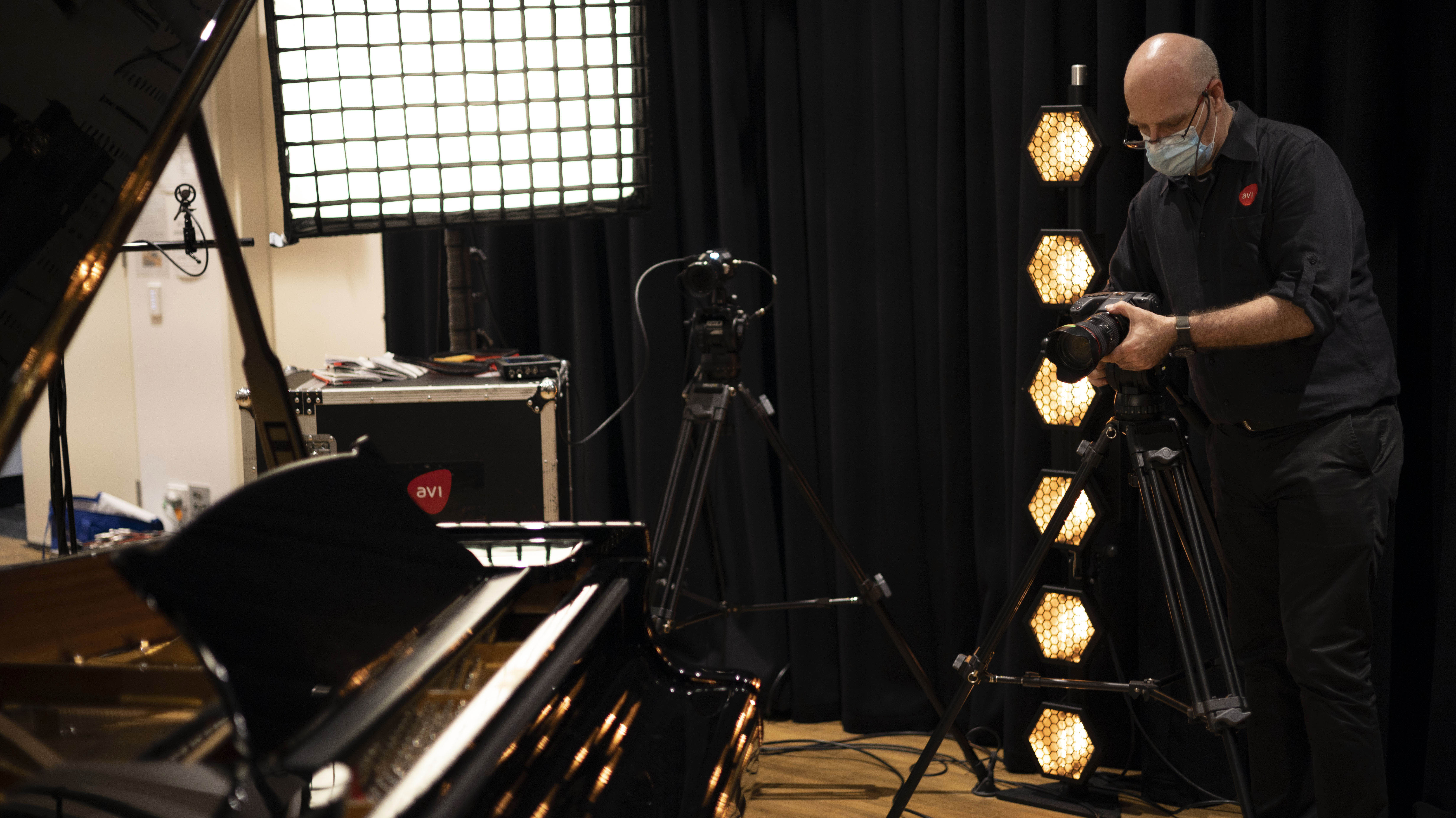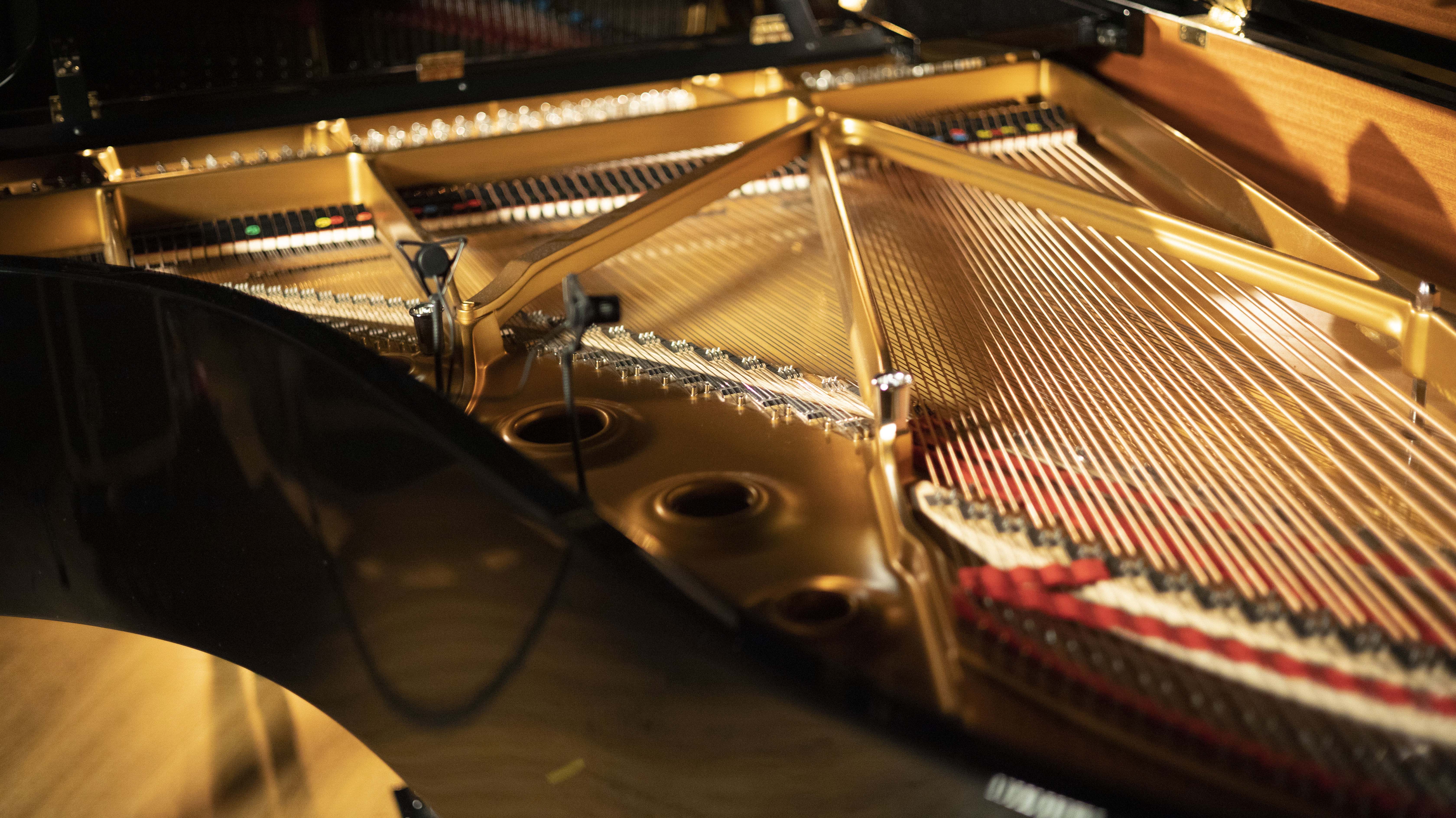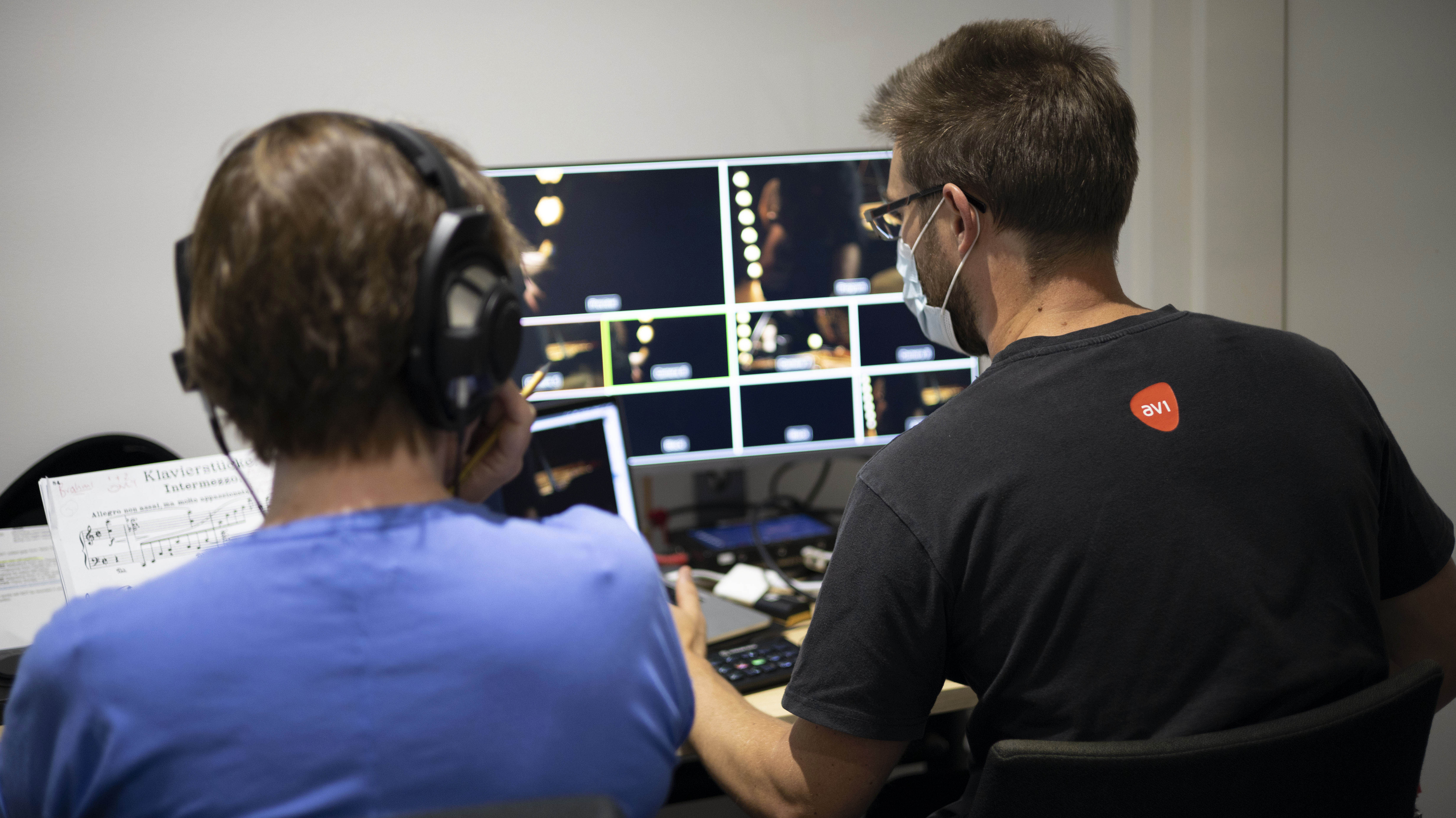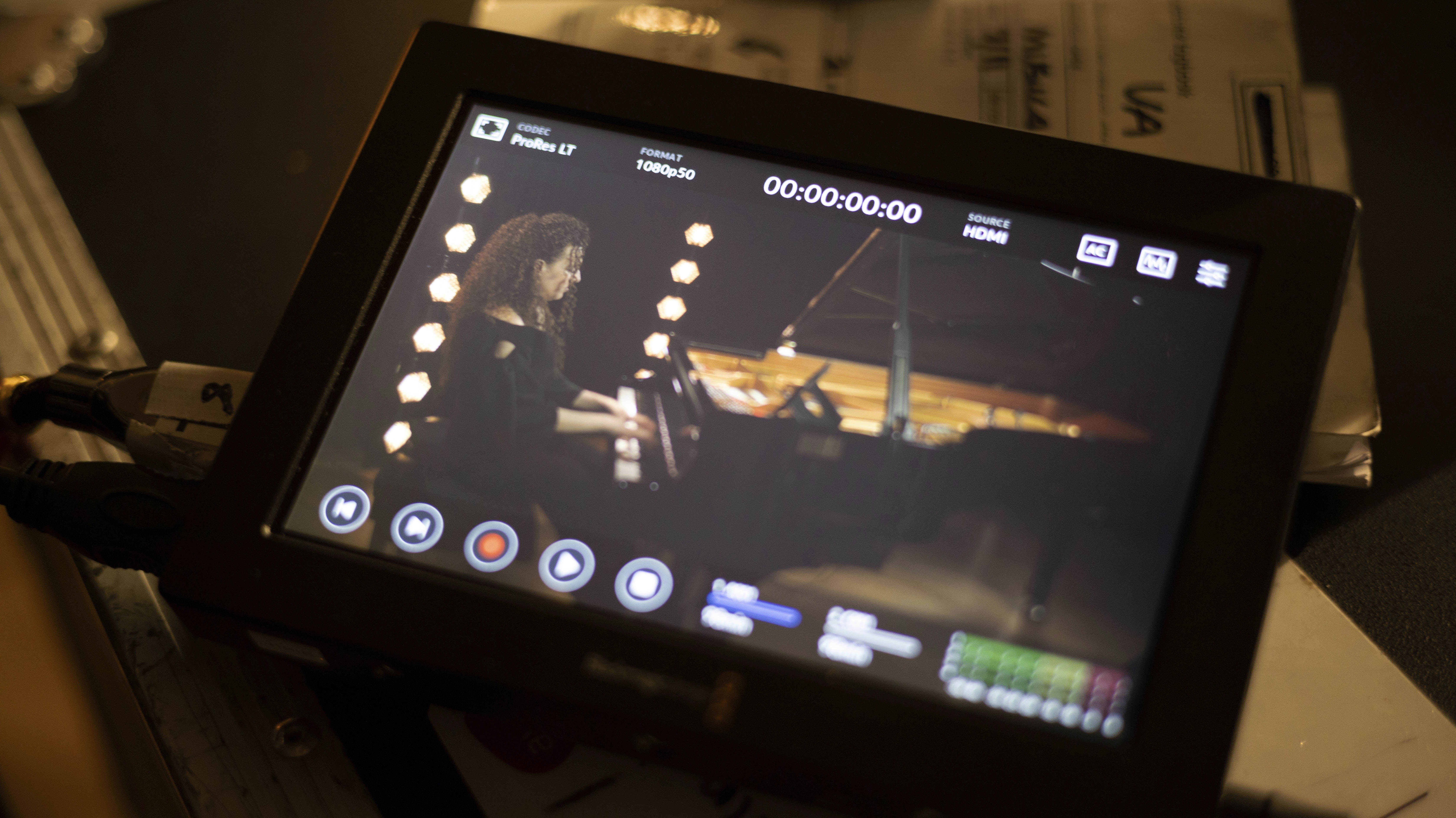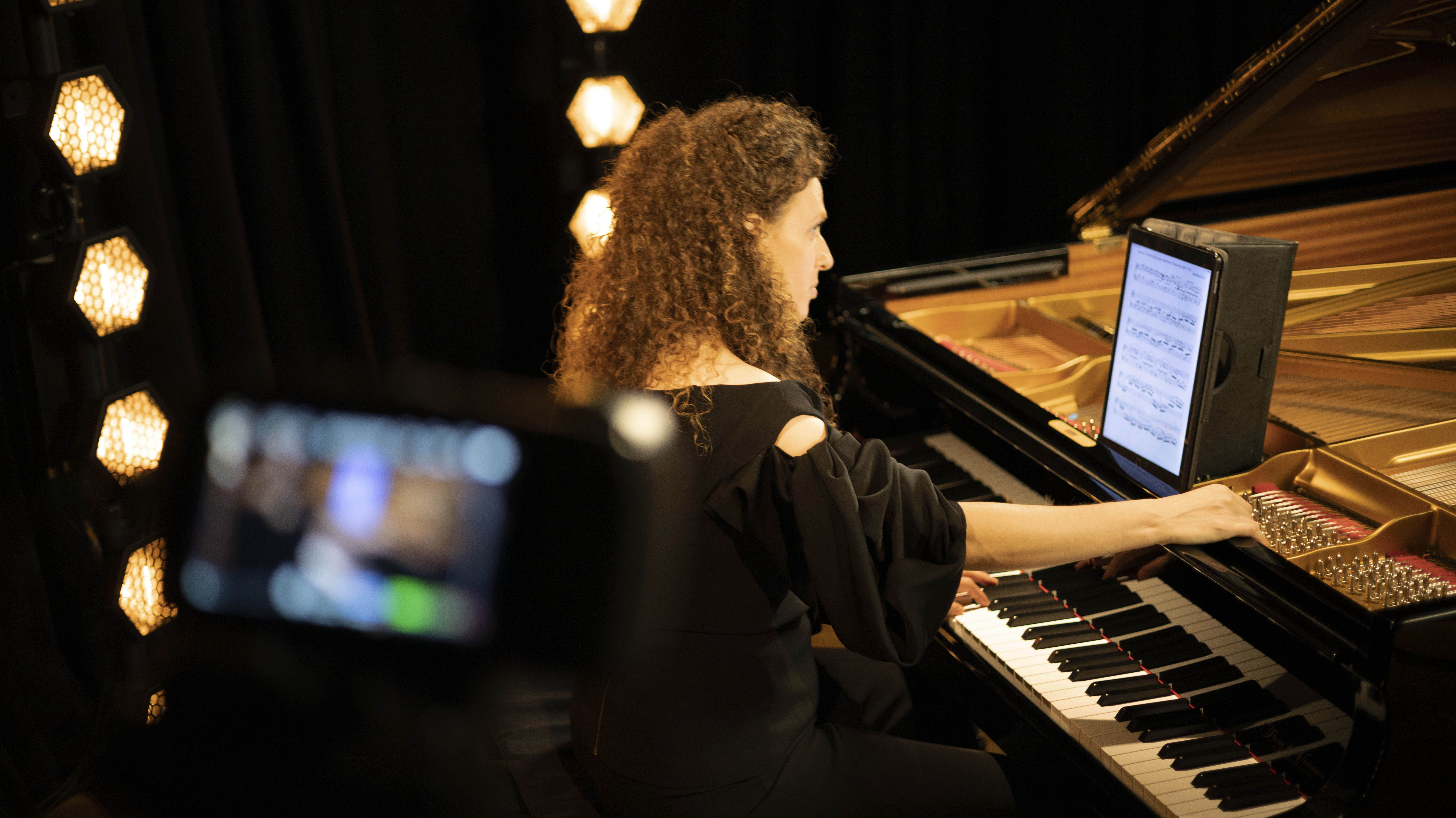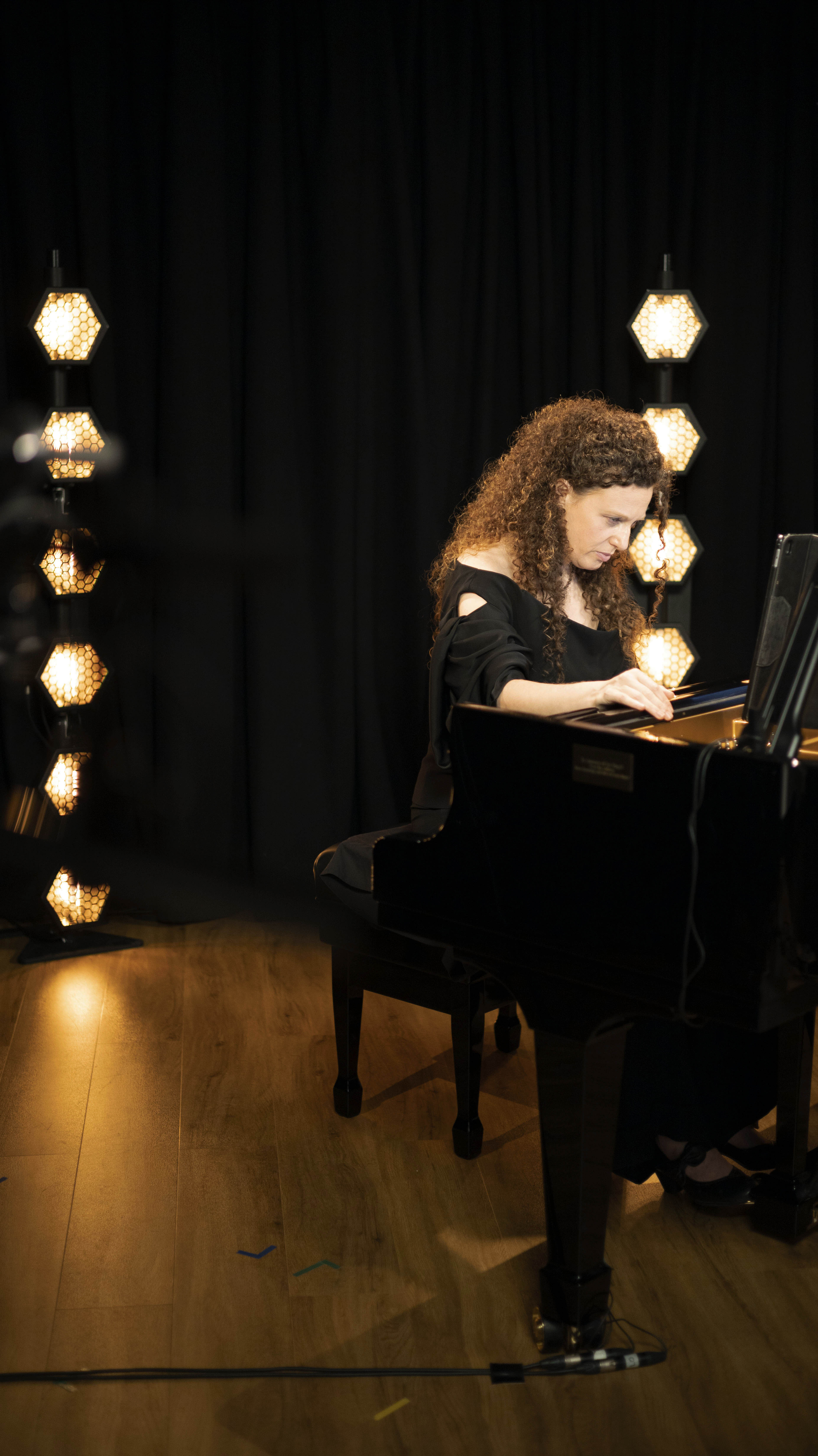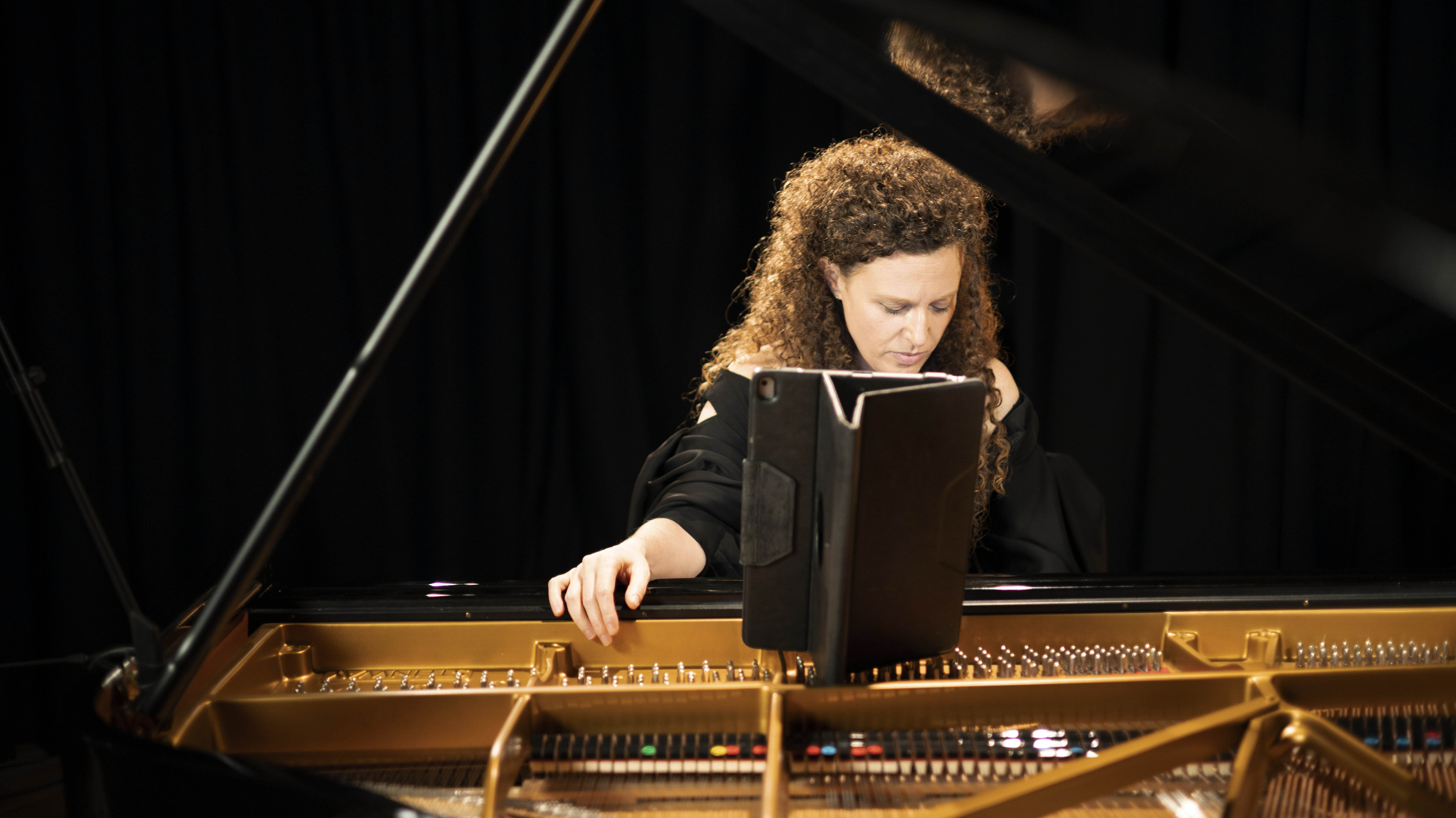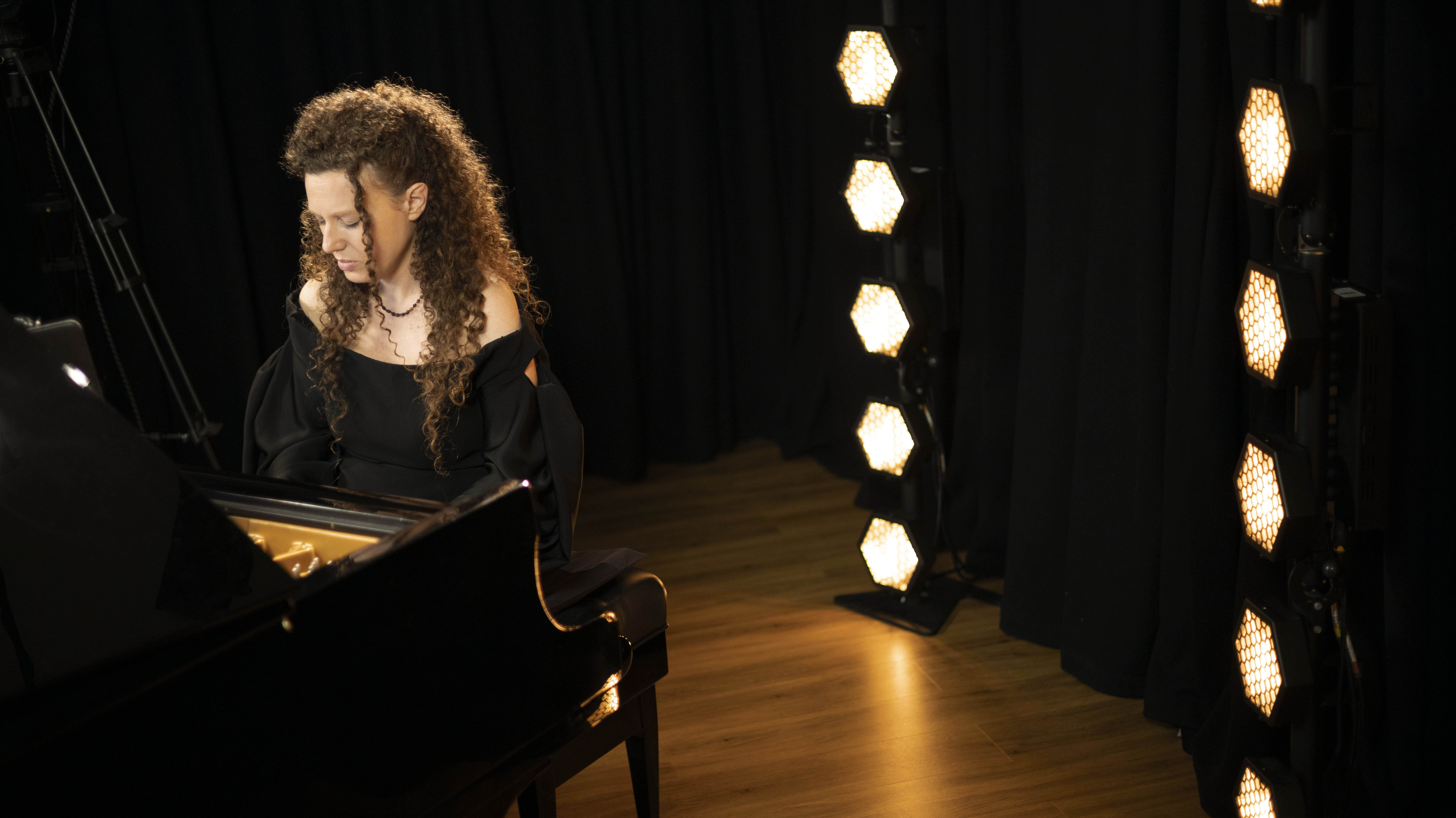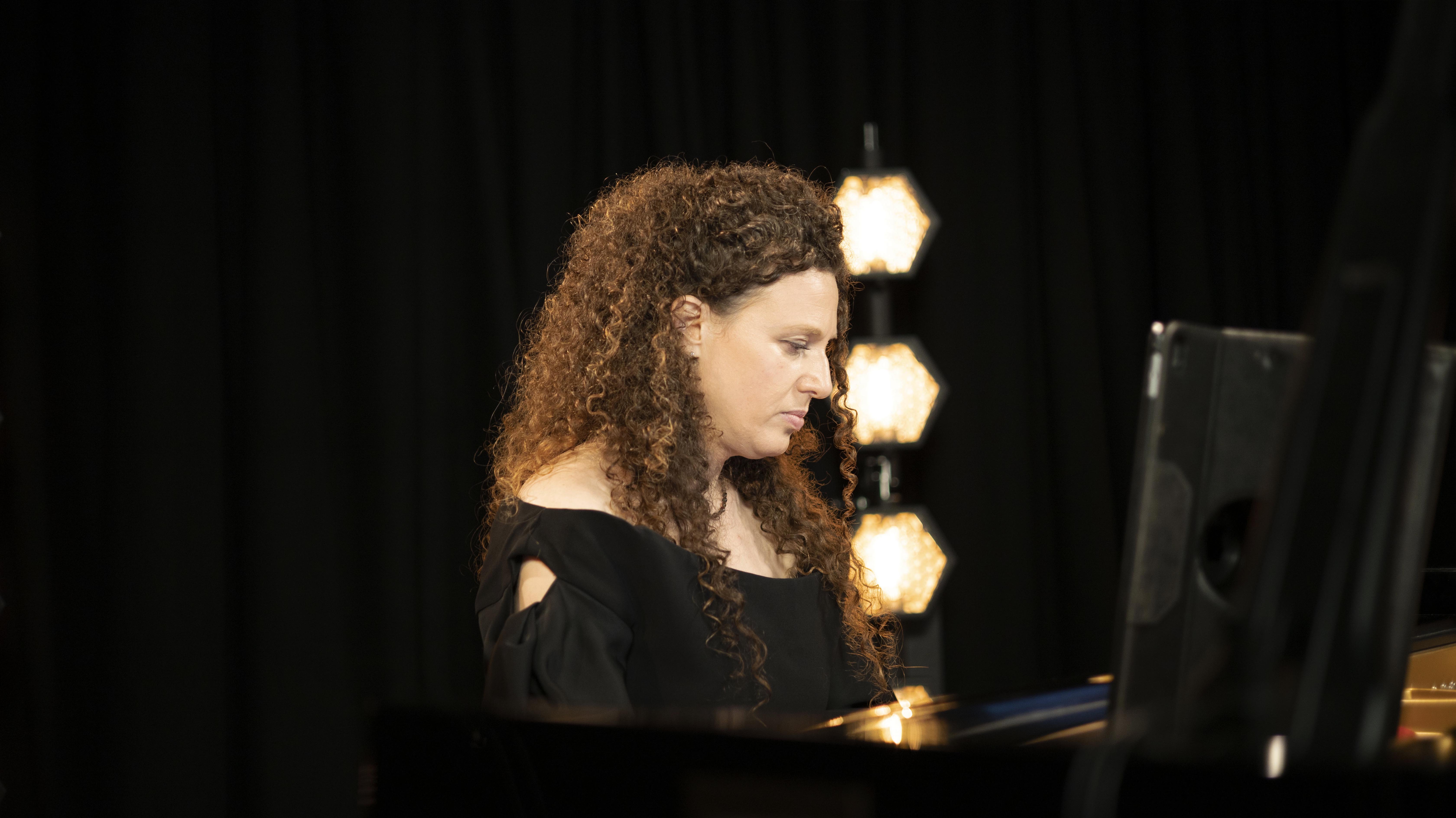Sonya Lifschitz, pianist
"Keeping music-making pulsing through our imaginations, hearts and bodies has been my primary driver the past two years as Covid forced venues to close, concerts to be cancelled and projects to be suspended. In putting together this program for Musica Viva, I wanted to create a musical tapestry in which to take refuge and shelter our spirits as we emerge into a changed world and into a larger conversation with our lives.
Spanning four centuries of Western musical canon, this program traverses the earthly and the celestial, rapture and anguish, birth and death. I’ve always had great affinity with late Brahms and starting this program with pieces from his op.118, the surging, tumultuous energy of the first Intermezzo and the intoxicating bitter-sweet tenderness of the second Intermezzo, felt like a perfect opener to reflect the emotional landscape of recent times. Bach’s Chaconne, arranged by Brahms for pianist’s left hand, was the next inevitable choice. This piece has always occupied the prime position in the inner pantheon of my musical soul, its sheer emotional amplitude and power staggering. Brahms himself wrote to Clara Schumann of this piece: “The Chaconne is, in my opinion, one of the most wonderful and most incomprehensible pieces of music…the man writes a whole world of the deepest thoughts and most powerful feelings. If I could picture myself writing, or even conceiving, such a piece, I am certain that the extreme excitement and emotional tension would have driven me mad”. I have studied this work with my late teacher, the great Leon Fleisher, whose recording of the Chaconne remains the absolute ideal for me, and this is a tribute and homage to this indomitable man, artist, and teacher. They say an audience needs a change of pace two thirds into the performance – that is where the magical, otherworldly universe of George Crumb enters this program. Crumb’s imaginative use of the instrument transports one into a mythical world echoing with ancient sounds of minstrels’ lutes, Coventry carols, bells, and gentle, mysterious nursery tunes. Just before the pandemic engulfed the world, I was in Padua (Italy) looking at Giotto’s Nativity frescoes at the Scrovegni Chapel which inspired Crumb’s Little suite for Christmas. Performing it in this program made me relive these precious, indelible memories… To close off this program, I wanted something intensely moving – something that would speak profoundly to the collective human experience of the past two years. I couldn’t think of a more fitting work than Janacek’s Sonata, a brand-new piece for me which I have wanted to learn for many years. Few musical works achieve the emotional potency of Janacek’s masterpiece, and few conjure the anguish and the rapture heard in this astonishing composition.
The mixture of excitement and trepidation I felt on the day of the filmed performance was palpable. Because of the extended lockdown in Sydney and the interstate border closures, which led to the cancellation of all my concerts, I have not performed in front of an audience, live or digital, for nearly 6 months! Adrenaline pulsing and excitement rising, I entered a beautifully lit studio and an intimately set up space with a gorgeous 6-foot piano, 4 cameras and lots of mics for company. Was this a live performance? Yes. But without an audience. Was this a recording? Yes. But done in one continuous take. Whatever it was, and however unusual a setting, I had to leap in, and to leap wholeheartedly, courageously, and unreservedly. How lucky I was that two of my favourite people in the world – Katherine Kemp (Director of Concerts & Communities at Musica Viva) and her beautiful daughter Maggie – came along to listen and to support, even if from a tech desk outside the studio. So while solitary in the performance space, with just the music and the composers to commune with, Katherine’s and Maggie’s presence made my heart so full and joyful, the music poured, performance instincts developed over decades of performing kicked in, and off I went, grateful for the opportunity to make music again, to transmit a living moment in time through the beautiful sounds imagined by the great composers all these years and centuries past."
Join us from the comfort of your home on Thursday, 18 November for Sonya Lifschitz's spellbinding performance. Tickets start from just $5. Book yours here.


